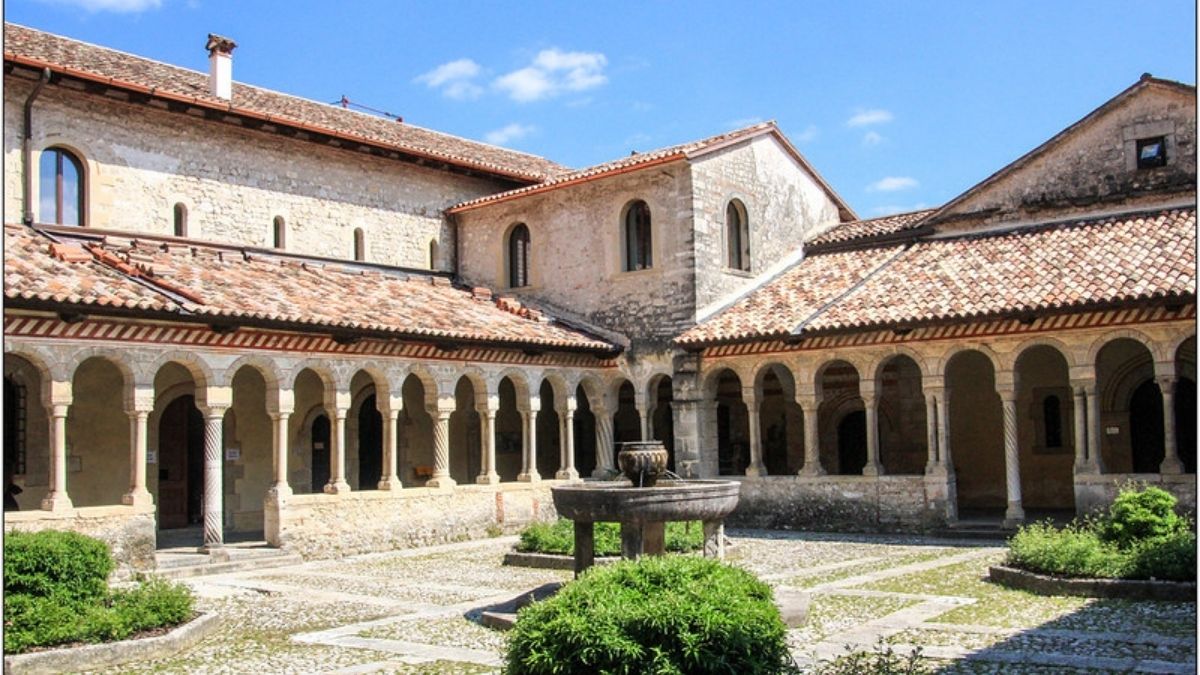In the Veneto province of Treviso, Follina it is part of the most beautiful villages in Italy. It is a small tourist center of the Alta Marca which, not far from Valdobbiadene, is included in the DOCG of Prosecco hills.
Follina, the story
That of Follina is a very ancient story, which began 120 thousand years ago. Via Claudia Augusta Altinate testifies to the Roman presence, prior to the settlement of the Cistercian monks. It was they who introduced thewool art of Val Mareno, and to build the abbey around which the village stands today. L'abbey of Follina, once upon a time, it was called "Santa Maria della Fulina in Sanavalle“, Recalling the fulling of woolen cloths that spread here thanks to the presence of pastures and waterways. In fact, even before the Cistercian monks, there were Benedictines in the village. The Cistercians remained there from 1146 to 1448, making the abbey a point of reference for the entire order. As well as a thriving center, which reclaimed the area between Piave and Livenza and built mills for millstones and wool mills.

At the end of the nineteenth century, the textile industry of Follina went into crisis until the last woolen mill closed. The two wars followed, up to the reconstruction and the modern era. Today, in Follina, tourists come to visit its abbey. They organize a stop here, during their tours of the cellars of Valdobbiadine. There wine area of the Marca Trevigiana in fact, it includes 15 municipalities of the Conegliano Valdobbiadene Prosecco Superiore Docg donation (European City of Wine in 2016) and, also in Follina, events and tastings are organized. Impossible to go home without a good one prosecco of Valdobbiadine as a souvenir!
Get inspired
The main attraction of Follina is, precisely, its abbey. His Cloister, finished in 1268, it houses a Baroque crucifix and a sixteenth-century fresco by Francesco da Milano. Fulling began here, which then extended from wool to the finest fabrics: Barberis palace, built at the foot of the abbey, was commissioned by the Brescian Francesco Fadda who made his fortune thanks to the fabrics. Among the buildings of the village that deserve a visit, therefore, there are precisely the wool mills. The nineteenth century Andretta wool mill it was then transformed into the Collegio San Giuseppe and, today, it houses the Municipality. The Paoletti Wool Mill it is the only one left in business, and is now appreciated by the world fashion industry.

Country of wool and silk, Follina often organizes themed events. Although the event par excellence is the secular Sagra of Pentecost, with kiosks that cook trout cooked in dozens of ways. The typical dish, to be honest, is however meat skewer. After a first course based on field herbs, the meat on the spit accompanied by a side dish of mushrooms is a real must.
Featured photo taken from Flickr (credit Maureen Barlin)





